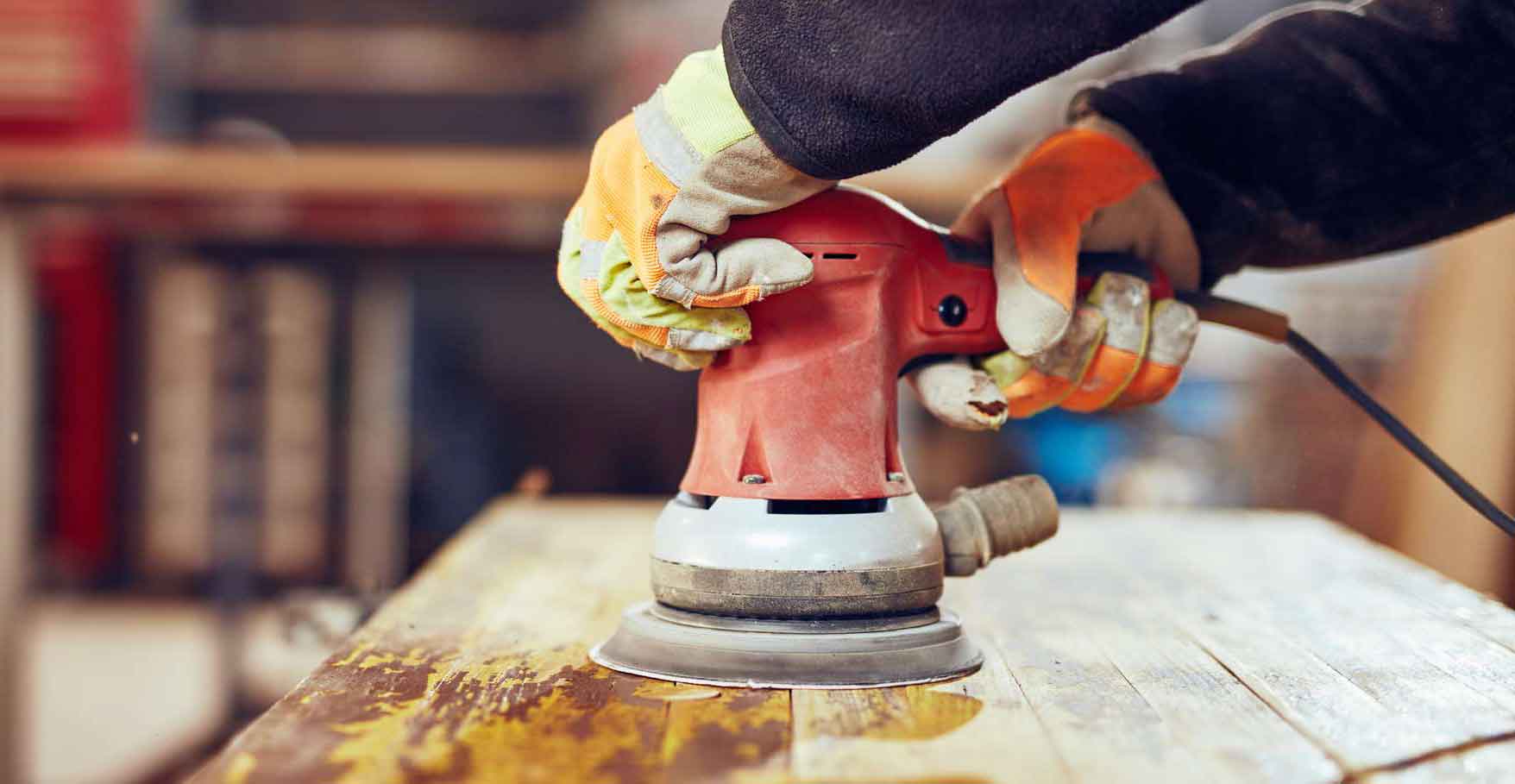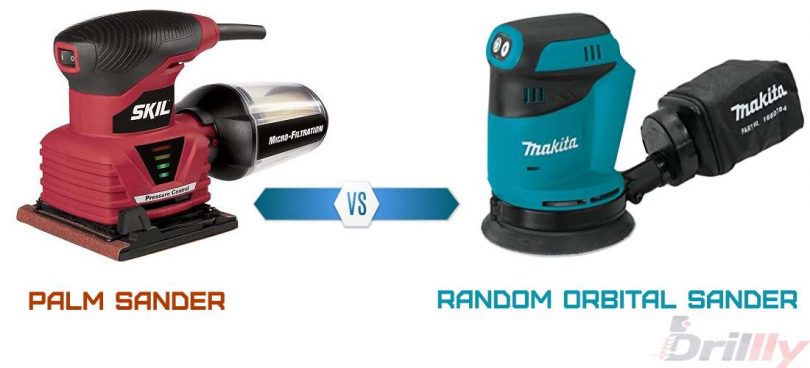Without a doubt, sanders are among the most valuable tools for a woodworker. They can turn a simple piece of wood into a work of art. Sanders are available in a wide variety of sizes and models. Each model has a different performance level depending on the hardness of the material and the size of the piece.
Palm sanders and random orbital sanders are among the most popular models. Woodworkers prefer them for being lightweight, portable and very easy to use. However, the results you get with each one are totally different.
If you have doubts about which type of sander to choose, don’t worry. Today we’ll show you the main differences between palm sanders and random orbital sanders. With this information, you’ll be better prepared to choose the most convenient sander for you.
Palm Sander Vs Random Orbital Sander
What is a Palm Sander?

These sanders can be carried in the palm of the hand and that’s the cause of their peculiar name. They have a limited capacity to generate power due to the small size of their motor. For that reason, they aren’t the best tools to sand thick layers of material in a short time.
In addition, the sanding pad moves at lower RPM and tends to get stuck when you push the tool against the surface. Palm sanders are cheap tools, but fragile as well.
These tools are ideal for delicate tasks such as removing small imperfections on hardwood pieces. They have a rectangular sanding pad that holds a quarter of a sandpaper sheet. The sanding pad moves backwards and forwards and its scratching pattern isn’t as uniform as that of orbital sanders.
The rectangular shape of palm sanders makes them ideal for sanding on 90-degree corners.
What is a Random Orbital Sander?

Random orbital sanders have a circular sanding pad that rotates and wiggles at the same time. This combination of movements generates scratches in random directions for a more uniform sanding.
These tools are much more powerful than palm sanders and are ideal for heavy duties like removing paint or varnish layers, correcting obvious imperfections and polishing surfaces. Random orbit sanders are available in different sizes and can be handled with one or both hands.
To use a random orbital sander, the user should slide the tool following the same rotation direction of the sanding pad. If the sander moves in the opposite direction, it generates spiral scratches that ruin the aesthetics of the piece.
Compared to palm sanders, random orbital sanders are much more expensive and heavier. However, they also have better performance and a longer useful life.
Features of a Palm Sander
Palm sanders aren’t as powerful as orbital random sanders. However, they can be very useful in certain circumstances. For example, when you’re working with too delicate wooden pieces like moldings and small sculptures.
Excessive abrasion from a random orbital sander could remove those little details that make the piece unique and beautiful. Palm sanders move at lower RPM, which means less wear and penetration. So, you can pass the sanding pad several times on the same area without risk of erasing the relief of the piece.
Unlike orbital random sanders, palm sanders use ordinary sandpaper sheets, which are very cheap. To install the sandpaper, you only need to cut a quarter of the sheet using scissors. Then, wrap the strip of sandpaper around the sanding pad and secure it with the clip.
Most palm sanders use electric power to work. Newer models use brushless motors that reduce wear between the rotor and stator. This means less noise, less residues and a longer service life. So, with proper use, palm sanders can stay operational for many years with very little maintenance.
Features of a Random Orbital Sander
As said before, random orbital sanders are much more powerful than palm sanders and they are power sanders. These tools can be used on very hardwoods and are ideal for molding large pieces of raw wood.
But, random orbital sanders are highly demanded not only for their high power. These tools release less sawdust into the air than other types of sanders. More advanced models include sawdust collecting tubes that suck up all the generated waste and transport it to a collecting bag.
The rotation of the sanding pad generates the suction effect inside the tubes. However, other models improve suction by connecting the tool to a vacuum tube. This improvement makes the sanding process much more comfortable, reducing to a minimum level the amount of waste released into the air.
Another interesting feature of random orbital sanders is the ease to replace the sandpaper. In these cases, the sandpaper comes in the shape of round stickers. You just need to remove the plastic layer on the glued face, detach the old sandpaper disc and stick the new one. As simple as that!
Random Orbital Sander vs Palm Sander – Pros & Cons
Advantages of Palm Sanders
- Lightweight, portable and easy to use
- Cheaper than random orbital sanders
- Work with common sandpaper sheets
- Ideal for delicate jobs
- Can sand on 90-degree corners
Disadvantages of Palm Sanders
- Less uniform scratching pattern
- Less powerful motor
- The sanding pad gets stuck with excessive pressure
- Can leave spiral marks on the surface
Advantages of Random Orbital Sanders
- Ideal for heavy-duty projects
- Can be handled with one or both hands
- Collect sawdust during work
- Compatible with vacuum tube adapters
- Random scratching pattern
- Less prone to damage the surface
Disadvantages of Random Orbital Sanders
- More expensive than palm sanders
- Poor performance on 90-degree corners
Conclusion
Certainly, there are divided opinions on the palm sander vs random orbital sander debate. Although it’s true that most woodworkers prefer a more powerful sander, it’s also true that too much sanding power can be a real problem in certain circumstances.
Therefore, it’s recommended to have at least one palm sander and one random orbital sander in your workshop for light and heavy duties. The more versatile and varied your sanding tools are the more freedom you’ll have to work on new and more interesting projects.








